Juniper medium: description of varieties and tips for growing them
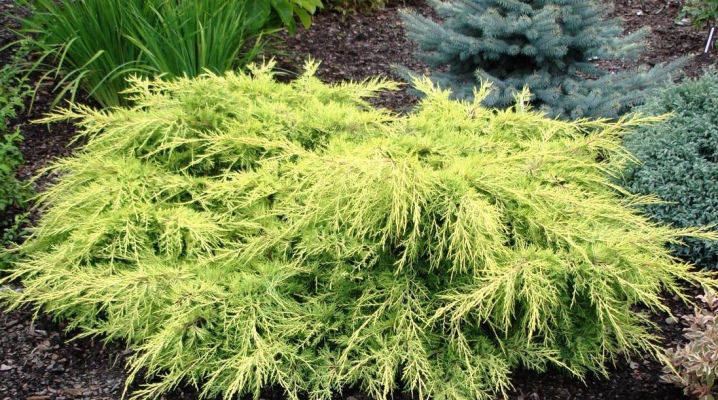
The middle juniper is a welcome "guest" on landscaped garden plots. A large number of varieties allows each summer resident to choose the best option for decorating the territory.
Peculiarities
The middle juniper is often called "pfitzeriana" - in honor of one of the creators of this hybrid variety, bred in Germany. The plant stretches in height up to 3 meters, and the diameter of the crown sometimes reaches 5 meters. The branches of the middle juniper look vertically upward, curving backwards at the ends. The needles of the plant are soft and not prickly, but closer to the end of the branches they resemble scales in their appearance. The palette of pfitzeriana is not so diverse: most varieties are colored yellow or bright green, although there are specimens with a blue color.
Growers find it easy to grow medium juniper. He is not afraid of low temperatures or the termination of watering, and also does not impose special requirements on the composition of the soil.
Planting this culture in a garden area allows you not only to transform the appearance of the space, but also to purify the air, thanks to the phytoncides secreted by the bush.
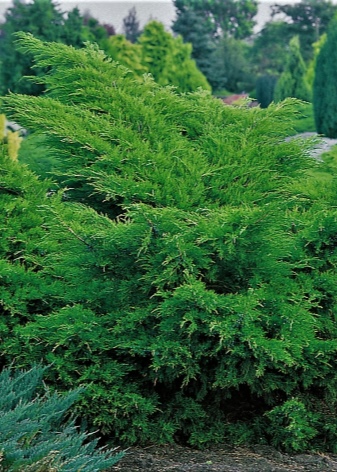
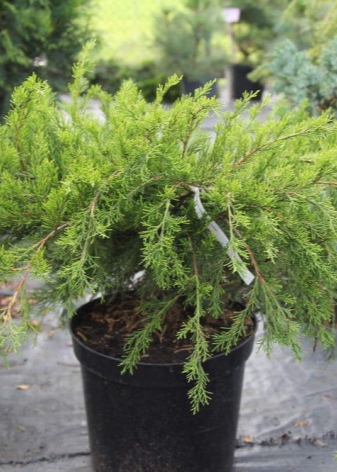
Review of the best varieties
The description of the middle juniper cannot be uniform, since each variety has its own specifics.
Juniper variety "Aurea" grows strongly in width - dimensions can reach about 5 meters in diameter. The large crown is painted in a beautiful golden green hue. This variety develops rather slowly, and therefore is often used to decorate the lower level in parks. Gardeners do not use it for individual small flower beds, since the growth of culture will lead to the fact that the rest of the "inhabitants" will be simply displaced. "Aurea" develops quite comfortably in the absence of nutrients in the soil or abundant watering, but reacts poorly to shade - without sunlight, the middle juniper stops developing and becomes ill.

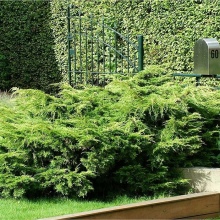
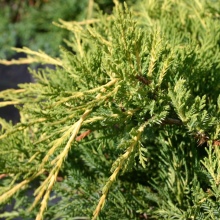
Juniper medium grade "King of Spring" has rather atypical parameters, since the height of the bush does not exceed 50 centimeters. The diameter of pfitzeriana is about 2 meters, and therefore this variety is often used to decorate lawns and lawns. The needles have an attractive yellow-green color, which, however, disappears in low light.

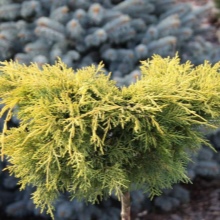
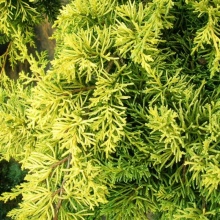
The plant of the Glauka variety reaches two meters in height and four meters in width. The dense crown is painted in a beautiful bluish color. Such a juniper looks great together with herbaceous plants, as well as being a component of alpine slides. Juniper loves good lighting and loose soil, is not afraid of lack of watering and low temperatures.
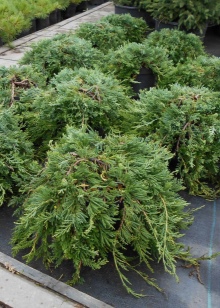
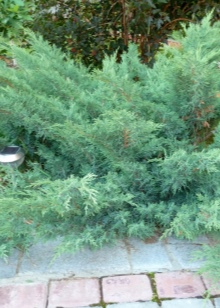
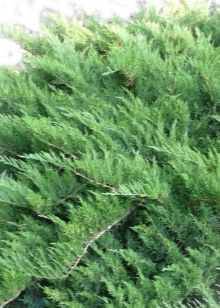
Juniper of the Kompakta variety grows rather slowly. Its height reaches only one and a half meters, and the diameter of the crown is the usual 2 meters. The branches rise slightly upward and are covered with gray-green needles, changing from needles to scales when moving from the trunk to the end of the branches. Variety "Compact" stands out among its "relatives" by the ability to develop even in the absence of sunlight.
In addition, this variety is completely undemanding and can grow even on poor soils.
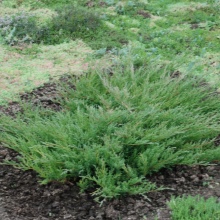
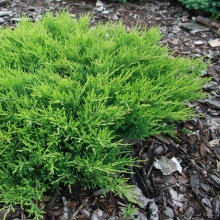
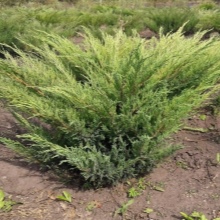
The Blue and Gold variety has a two-tone color: one part is colored yellow and the other blue-green. The dimensions of the bush are not too large: 1.5 meters high and 2 meters wide. The development of the juniper is very slow, and the bush adds only a few centimeters per year. The main requirements of Blue & Gold are loose soil and good lighting.
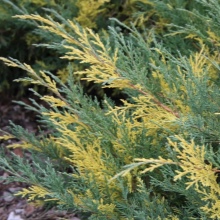
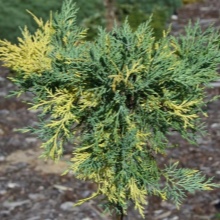
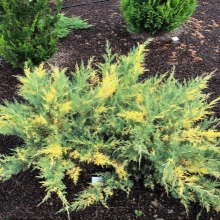
Juniper medium "Gold Coast" has a bright crownpainted in a mixture of gold and green. Its height is quite common, and sometimes its width reaches 3 meters. "Gold Coast" lands either "without neighbors" or in a small group.
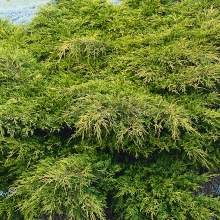
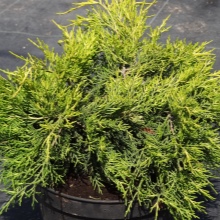
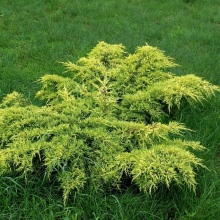
Variety "Mordigan Gold" is a stunted representative of the pfitzerianas it does not grow taller than one meter. Its branches lean to the ground, and the soft needles are painted in a pleasant yellowish tint. The average juniper feels good both on poor soil and in areas with low temperatures. Nevertheless, parameters such as the lightness of the ground and sufficient illumination are important.
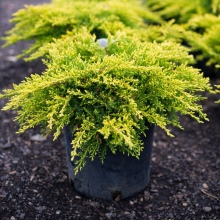
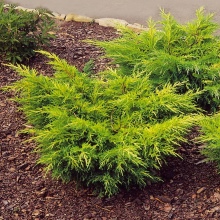
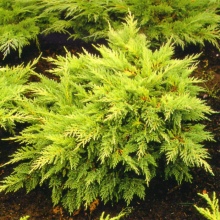
Plant variety "Wilhelm Pfitzer" painted in a rich green hue. The plant can grow up to 5 meters wide and 3 meters high, which makes it a tall crop. However, the development of such a juniper is rather slow - no more than 10 centimeters are added per year.

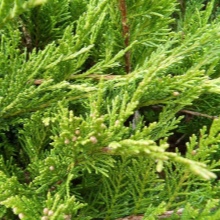
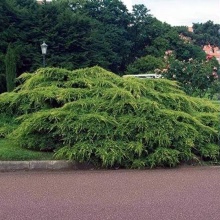
The variety "Gold Star" has a very beautiful golden color, which appears only in well-lit areas. The parameters of the shrub are quite average - about one and a half meters both in width and in height. Other popular varieties among gardeners include Mint, Goldkissen and Hetzi.
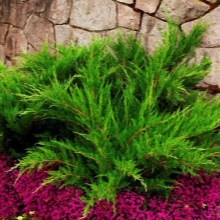

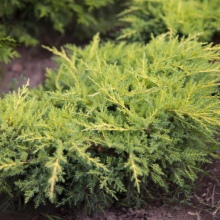
Landing rules
Medium juniper can be planted in almost any area. The main thing is to choose a well-lit area, since most varieties do not develop well in the shade, and also to attend to loose soil with sufficient aeration, because the juniper suffers from too dense soil. If the available land is not suitable for planting pfitzeriana, then the soil mixture must be made independently from sand, peat and coniferous soil. The hole is pulled out about a month before the planned landing. The dimensions are determined in such a way that the hole is 2.5 times larger than the juniper rhizomes together with the earthen lump.
The seedling of the plant must be young - at an age not exceeding the three-year mark. Before planting, the roots are soaked in a solution of potassium permanganate and transferred into the hole right along with an earthen lump. It is necessary to plant an average juniper in the spring. The drained hole is filled about half with light soil or soil mixture, after which seedlings are placed there.
Further, the entire remaining space is filled with soil, irrigated and mulched with sawdust or tree bark. In the first week after planting, it is recommended to shade the bush a little.

How to care?
Caring for a medium juniper is not too difficult. Irrigation can be sparse, but abundant, which is perfectly matched by an automatic irrigation system. You should not water the plant in the heat, as this can even harm the culture. Fertilization is carried out once a year: either in April or in the first week of May. In this situation, nitrogenous substances are used that contribute to the growth of green mass. Organic fertilizers are strictly prohibited, as their use is harmful to conifers.
For mulching juniper, you can use peat, pine needles or cut grass. The procedure is carried out once a year and allows, on the one hand, to slow down the evaporation of liquid, and on the other hand, to suspend the appearance of weeds. It is important to loosen the soil very carefully so as not to damage the roots located close to the surface.
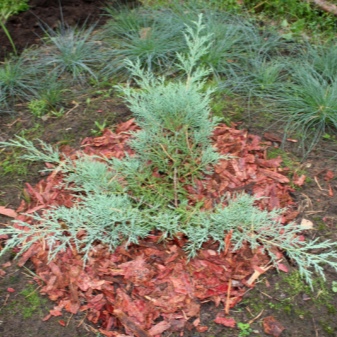

Sanitary pruning for juniper is a must. The procedure is used to eliminate diseased or dried shoots, which contributes to the healing of the shrub.Decorative design is carried out if necessary.
In autumn, the area next to the roots of the juniper must be covered with a thick layer of peat. If the shrub is still young, then it is covered with spruce branches or stored under a snow cushion on the frame. If the juniper grows in a sunny area, then in winter it will be necessary to put the screen on the side that is illuminated the brightest.
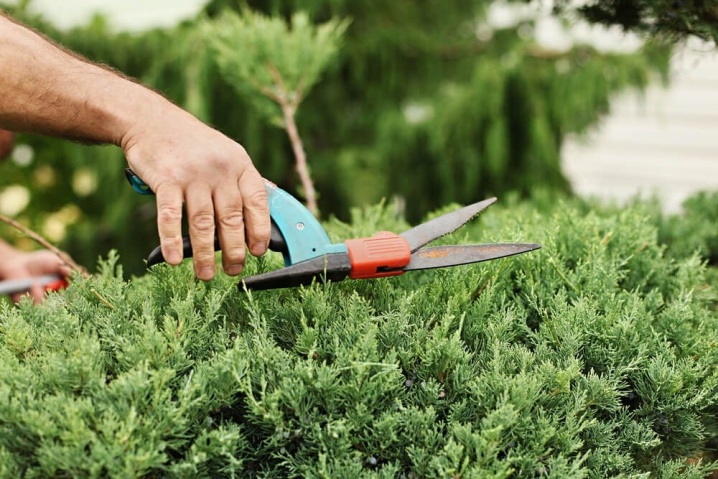
Reproduction
Pfitzerian juniper is usually propagated by cuttings. To form cuttings, young twigs are cut from the bush, the length of which is 12 centimeters. They are cleaned from both ends of the needles.
Cuttings should spend at least two months in a kind of greenhouse with the required substrate. A greenhouse is made from an ordinary wooden box, covered with polyethylene film, which allows you to create the required level of humidity and temperature. However, one should not forget about airing at this time.
The root system of the middle juniper is formed approximately 2 months after placement in the greenhouse., and this means that the seedlings can be transferred to larger containers, in which they will have to spend a couple of years. Only after the above period is pfitzeriana planted in open ground.
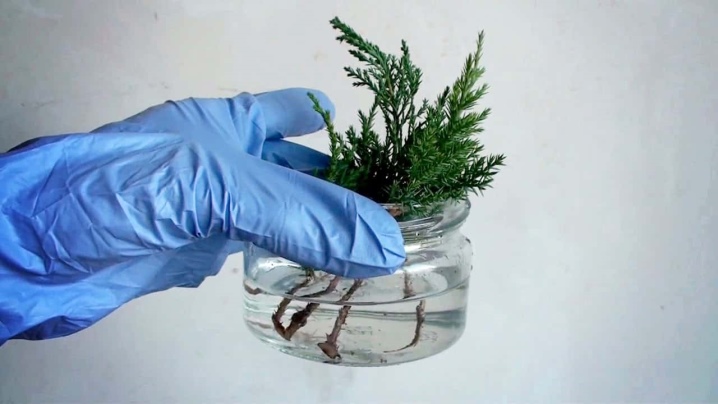
Diseases and pests
Most often, the middle juniper suffers from fungal diseases. With a brown shute, the needles begin to crumble and change their color to yellow. Branches can also dry out and bend or become covered with orange-colored growths. To heal the plant, you will first need to remove all damaged parts. Further, the bush is treated with fungicides, for example, Bordeaux liquid or copper sulfate.
Also, this plant is often attacked by various insects: from aphids to mealybugs.
To prevent the appearance of pests, it will take one to three times a season to spray the plantings with insecticides.
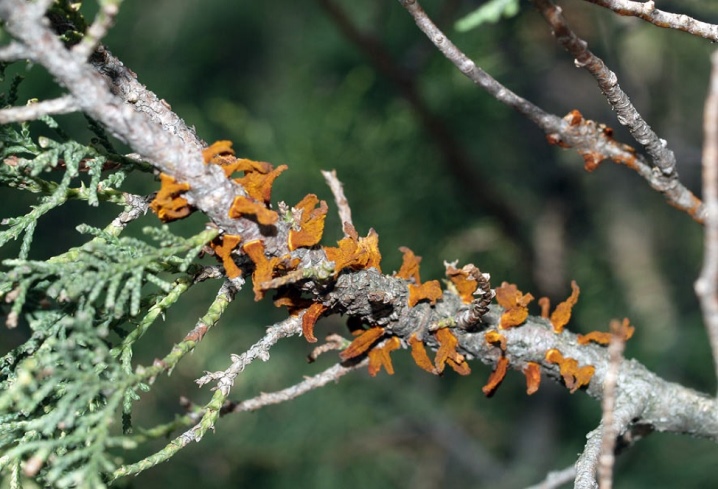
Use in landscape design
Juniper medium is used for many landscape design tasks. Those varieties that have a relatively small height are chosen for compact "structures" of plants, for example, alpine hills. In addition, they look good in flower beds, flower beds, and also rose gardens. The middle juniper is also suitable for decorating coastlines. Shrubs look good on curbs, and also become ideal separators of individual zones - they resemble a hedge in their appearance, but in a smaller size.
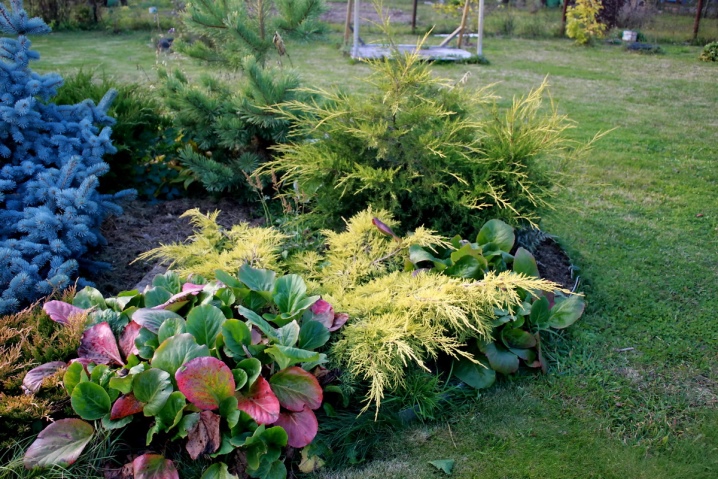
The middle juniper looks beautiful next to compositions of tall trees, for example, pines, spruces or firs. It is important that the shapes and colors of the crown of the plants that make up the composition are combined with each other and emphasize the advantages of each other. Besides, a good solution would be to place a medium juniper on rocky or sparsely vegetated areas to enhance their appearance with a towering green "pouf"... Since juniper is an unpretentious crop and has a long life cycle, it is recommended to plant it in urban conditions.
It is important to mention that despite its attractive appearance, this juniper is poisonous and therefore should not be planted in the presence of small children or animals that can eat its fruits.
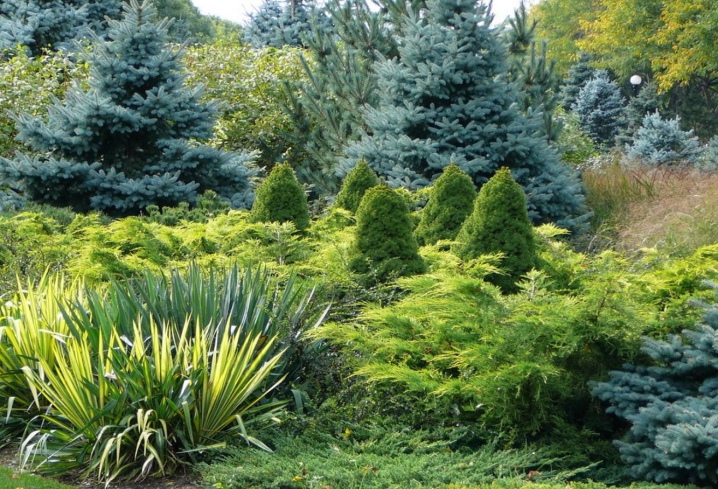
For tips on growing medium juniper, see the following video.



































































The comment was sent successfully.